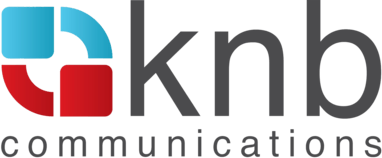Day in the life: what does a media relations expert do all day?
Table of contents
What does a media relations manager do?
When asked what I do for a living I typically reply with “public relations,” and if people don’t know what that means, to simplify the conversation I’ll say “marketing.” Both are true. But as anyone who works in this space will understand, the full truth of it is “media relations.”
Basically, my role acts as a liaison between my clients and the media, facilitating interviews, writing pitches, and ultimately managing relationships with editors and outlets. There are a lot of moving parts.
What’s the typical day of a media relations professional like? Let me break it down:
Morning (8 to 9:30 a.m.): emails and reading
While I drink my morning coffee, this time is used for catching up on emails and messages from the night before. After that, it’s time to delve into the news to see what people are covering – I subscribe to a lot of newsletters and RSS feeds, and I utilize Reddit and Twitter for most of my daily review.
9:30 - 10:30 a.m: align and target
Usually, this is a time to connect with other team members for meetings and to align on what is happening with clients. This is also a time to check on any pending interviews we’re waiting to publish, ensure press releases are out if one is scheduled, and submit any bylines or Q&As to editors so we’re meeting their deadlines. I’ll also use this time to check to see if any editors are seeking sources for comments on any stories they’re working on.
Basically, this time helps to set the tone for the rest of the day and often the week.
10:30 a.m - 12 p.m.: communications and pitching
Client communications typically happen before lunch. This is where we communicate with clients on the status of media outreach, gather details from them that will be used for pitching, update project trackers, and more.
However, since this is not an everyday occurrence, this time is often used for pitching. During this time I’m sending out pitches I either wrote the day before, or I am following up on pitches from earlier that I think journalists will like – and sometimes I’m expanding my net and sending out brand new pitches.
As a piece of advice: Don’t follow up too much, and only pitch the editors you think will actually be interested in your story. Someone interested is out there waiting for your exact pitch, and it’s your job to find them.
12 - 12:30 p.m: refuel
Afternoon coffee and lunch.
12:30 - 2:30 p.m: meetings
While we at KNB do our best to not overwhelm anyone with calls and meetings, they are an inevitable part of most days. I’ll meet with clients to align on upcoming news, brainstorm new pitch ideas, and develop our media strategies. Internal video calls with other team members in marketing and account management are also part of the job, especially since we all share often overlapping priorities.
2:30 - 3:30 p.m: making connections
Carving out time to make calls to contacts and see what they’re working on is an important part of building relationships. If I am not making calls, I’m chatting with people on LinkedIn or adding people I want to connect with. I try to carve out time nearly every day to do this less-formal outreach because even if it isn’t important right now, making those contacts and keeping in touch will serve me down the road.
3:30 - 5:30 p.m: writing
Writing pitches takes time, and I try to offer myself space for a “fresh eye” before sending them out, meaning I’ll write pitches the day before I send them out, so I can make corrections, tweaks, and add a little bit of polish. The late afternoons are also used for editing bylines we’re submitting on behalf of clients, writing presentations, or even penning the occasional op-ed that comes as part of the job.
As a general takeaway: Doing this job successfully will require a lot of back-and-forth communication, some meetings, and a lot of time working to develop interesting stories that editors will want to cover. Being successful means balancing meeting with people and also finding time to write and send out pitches. If you’re a people person with a passion for telling stories, this is a role that offers both challenges and rewards. And I’m glad to say, after more than a decade working in and around the media – I still love it.
Search










